#Nurseries (Horticulture)
Explore tagged Tumblr posts
Text



Plant of the Day
Sunday 1 September 2024
In a moist but well–drained, semi-shaded raised bed a wonderful Gentiana ornata (decorated gentian) was flowering. This low-growing, semi-evergreen perennial, produces a basal rosettes of leaves and pale blue, bell-shaped flowers in the autumn.
Jill Raggett
#gentiana#decorated gentian#semi-evergreen#blue flowers#plants#horticulture#gardens#garden#raised bed#Ardfearn Nursery#scotland#inverness
107 notes
·
View notes
Text
🌤️hey!! i have a tip for you if you often find yourself at your local nursery trying to find plants with specific lighting needs! ☀️
LOOK UP!! or down. If the nursery has the means, it will place plants in conditions it needs to thrive.
🌥️do you see a shade mesh net hanging up anywhere? do you see any shade on the ground? the plants that are sitting under it are most likely shade plants! 🌥️
☀️Is the plant sitting right next to or up against the window? is it in a sunbeam? is it directly under a skylight that is facing east or upwards? that plant is a full sun plant. ☀️
🌤️is it in the middle of the store, away from any direct light, but not sitting in direct shade? that's gonna be the part sun-part shade or indirect light plants. 🌤️
☀️‼️ disclaimer, this isnt a hard and fast rule, some nurseries have limited space and light and have to get creative with placing displays. if youre not confident you can check the tags or ask someone (or google) for help! this tip is just to get you started and make the process of plant shopping easier ‼️☀️
#plants#horticulture#plantblr#plant parent#gardening#gardenblr#horticulturalist#houseplant aesthetic#houseplants#plant tips#plant nursery#plant nerd#greenhouse#garden#cottage aesthetic#cottagecore#plant aesthetic#plant dad#plant mom#bloomy's tips tag
7 notes
·
View notes
Video
n0_w1150 by Biodiversity Heritage Library Via Flickr: High grade vegetable and flower seeds, bulbs and small fruits for spring planting /. New York :F.E. McAllister.. biodiversitylibrary.org/page/46730952
#Berries#Bulbs (Plants)#Catalogs#Flowers#Gardening#McAllister#F.E. (Firm)#New York#New York (State)#Nurseries (Horticulture)#Nursery stock#Seeds#Mertz Library#The New York Botanical Garden#bhl:page=46730952#dc:identifier=http://biodiversitylibrary.org/page/46730952#bhlGardenStories#BHLinbloom#lily of the valley#Convallaria majalis#May bells#Our Lady's tears#mary's tears#muguet#glovewort#Apollinaris#flickr
3 notes
·
View notes
Text
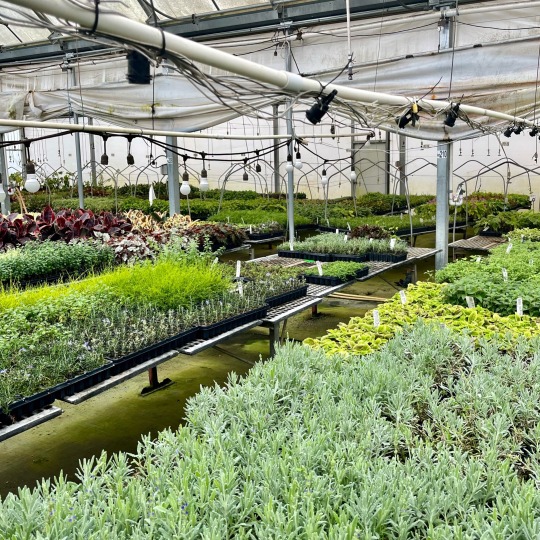

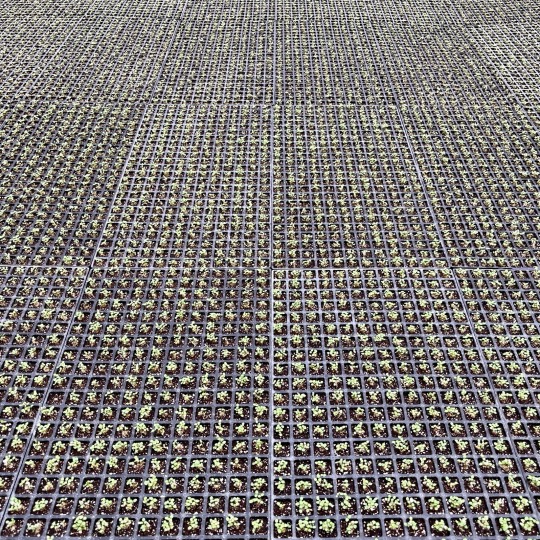


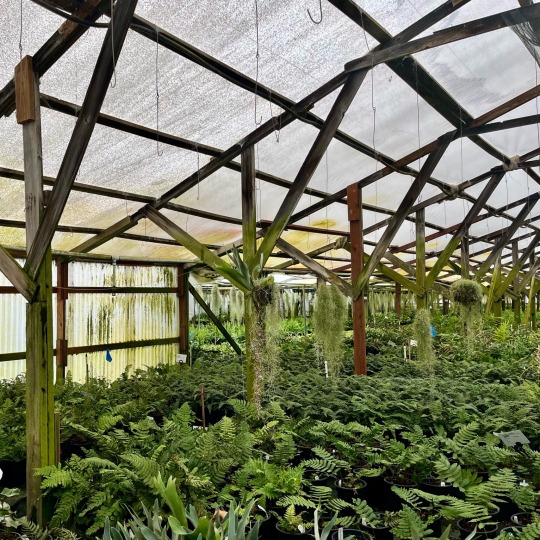
Greenhouse nursery tour 2.17.24. Kawahara, Floricultura, and Monterey Bay Nursury.
#hi monterey bay nursery pls hire me i can do things like identify liverworts and freak out about their impeccable gemma cups#plant science#greenhouse#horticulture
3 notes
·
View notes
Text
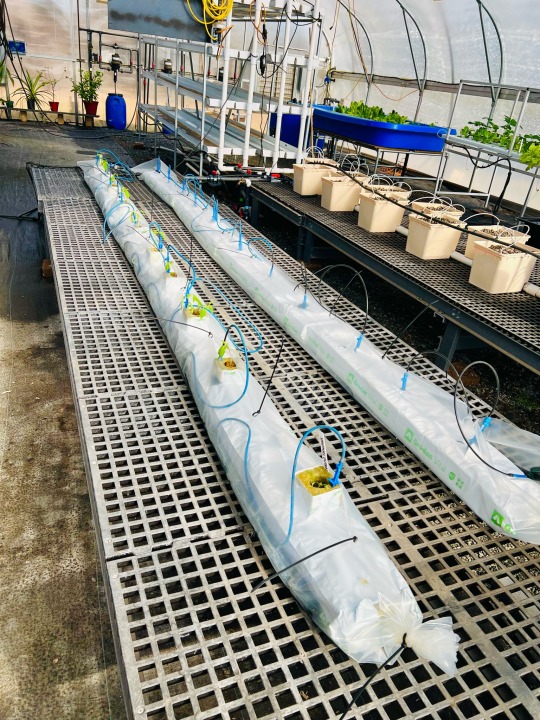

1/10/24 ~ Back to school! This semester I’m taking Greenhouse Production & Sustainability in Horticulture 🌿
Today, we installed this irrigation system in the greenhouse. Usually you would use a gutter system for the water to flow back into the tank. But our teacher said the type of gutters they need are always out of stock and kinda pricey. So they have been using plastic instead.
#indoor garden#container gardening#sustainable gardening#vegetable gardening#starting seeds#growing food#veganuary#grow organic#grow your own food#organic gardening#greenhouse nursery#greenhouse#sustainable agriculture#horticulture
5 notes
·
View notes
Text

weeping cherry out here making everyone else look bad
4 notes
·
View notes
Text
Mango V Grafting Technique
#��🥭🥭#grafting#budding#fruit#trees#WhatsApp#OUTNOW#Dosa#nursery#plant#union#explore#science#seed#seedling#life#garden#gardening#احداث#horticulture#pomology#agriculture#toungue#farming#orchard#teamwork
2 notes
·
View notes
Text
https://www.greglo.com/
Cocopeat, also known as coir pith, coir fiber pith, or coir dust, is a byproduct of coconut processing. It's an eco-friendly and sustainable growing medium derived from the husks of coconuts. In this guide, we’ll explore the benefits of cocopeat, its various uses, and why it’s an excellent choice for gardening and agriculture.
What is Cocopeat?
Cocopeat is the fibrous material found between the hard shell and the outer coat of a coconut. When coconuts are processed to extract the coir fiber, the remaining material is ground into a powdery substance, which is cocopeat. It is commonly used as a soil amendment or growing medium due to its excellent water retention, aeration, and nutrient-holding capacities.
Benefits of Using Cocopeat
Excellent Water Retention
Cocopeat can hold up to eight times its weight in water, ensuring that plants have a steady supply of moisture. This makes it ideal for regions with water scarcity or for plants that require consistent watering.
Improved Aeration
The fibrous structure of cocopeat provides good aeration to plant roots, which is crucial for healthy root growth and overall plant health. This helps prevent root rot and other soil-borne diseases.
Eco-Friendly and Sustainable
Cocopeat is a natural, renewable resource made from coconut husks, a byproduct of the coconut industry. Using cocopeat helps reduce waste and promotes sustainable agricultural practices.
Neutral pH Level
Cocopeat has a neutral pH level (5.5-6.5), which makes it suitable for a wide range of plants. This neutrality helps in nutrient absorption and reduces the need for pH adjustments.
Rich in Nutrients
Although cocopeat itself is not high in nutrients, it has a good capacity to hold and release nutrients added to it. This makes it an excellent medium for fertilization, ensuring that plants get the nutrients they need over time.
Uses of Cocopeat
Soil Amendment
Cocopeat can be mixed with soil to improve its texture, water retention, and aeration. It is especially beneficial in sandy soils that drain too quickly or clay soils that retain too much water.
Seed Starting
Due to its fine texture and excellent water retention, cocopeat is perfect for starting seeds. It provides a stable and moist environment for germination.
Hydroponics
Cocopeat is widely used in hydroponic systems as a growing medium. It supports plant roots and maintains the necessary moisture and nutrient balance for hydroponic cultivation.
Potting Mix
Cocopeat can be used alone or mixed with other components like perlite, vermiculite, or compost to create a high-quality potting mix. This mix is ideal for container gardening.
Mulching
Applying a layer of cocopeat on top of the soil can help retain moisture, suppress weeds, and regulate soil temperature. This is particularly useful in garden beds and around trees and shrubs.
How to Use Cocopeat
Hydration
Cocopeat is usually sold in compressed blocks or bricks. To use it, soak the block in water for a few hours until it expands and becomes loose. Break it apart to create a fluffy, soil-like consistency.
Mixing
For soil amendment, mix cocopeat with garden soil in a 1:1 ratio. For seed starting or potting mix, blend it with other components as needed.
Application
Use hydrated cocopeat directly in planting beds, containers, or hydroponic systems. Ensure even distribution and proper watering to maintain optimal moisture levels.
Conclusion
Cocopeat is a versatile and sustainable growing medium that offers numerous benefits for gardeners and farmers. Its excellent water retention, aeration, and nutrient-holding capacity make it an ideal choice for various horticultural applications. Whether you're starting seeds, improving soil, or growing hydroponically, cocopeat can enhance plant health and yield.
By incorporating cocopeat into your gardening practices, you contribute to environmental sustainability while enjoying the benefits of a superior growing medium. Try cocopeat today and experience the difference it can make in your garden!
SEO Keywords
Cocopeat
Coco peat
Coir pith
Coir fiber pith
Sustainable growing medium
Soil amendment
Seed starting
Hydroponics
Potting mix
Mulching
Water retention
Plant aeration
Eco-friendly gardening
Gardening tips
1 note
·
View note
Text
Shining a Light on Profitability: How to Grow and Sell Tropical Foliage Plant Liners Under Grow Lights
This blog post aims to provide a comprehensive guide on growing tropical foliage plant liners under grow lights for profitable resale. It targets nursery owners, small-scale growers, and gardening enthusiasts interested in expanding their product range or starting a business in plant resale. The post will delve into the practical aspects of setting up and managing a grow light system, selecting…

View On WordPress
#agricultural entrepreneurship#fertilization schedule#gardening guide#Gardening Tips#greenhouse growing#grow lights#Home Gardening#horticultural practices#horticulture#Houseplants#humidity control#indoor gardening#light intensity#market demand#nursery business#optimal growth conditions#Pest Management#plant care#plant harvesting#plant health monitoring#plant liners#plant nursery#plant resale#Plant Varieties#profitable cultivation#soil moisture#sustainable agriculture#temperature management#tropical foliage plants#urban farming
0 notes
Text
Horridculture - Sniveling
My colleagues are as totally excellent as my career is! Horridculture is a collection of rants about horrid horticulture. Almost all of such rants are from my own experience and observation within the various horticultural industries. There are more than I can write about. I have been involved with so much more than just production of horticultural commodities on the farm. Horridculture is a…

View On WordPress
0 notes
Text


Plant of the Day
Friday 30 August 2024
In a raised bed at Ardfearn Nursery, near Inverness, there were many treasures including Anemone obtusiloba (round-leaved anemone). This compact perennial has deeply lobed leaves with clusters of variable hues of blue, white and sometimes yellow flowers. This species thrives in a moist, humus-rich soil in partial shade.
Jill Raggett
#anemone#round-leaved anemone#plants#horticulture#blue flowers#gardens#garden#Ardfearn Nursery#inverness#scotland#herbaceous#perennial#herbaceousperennial
89 notes
·
View notes
Photo
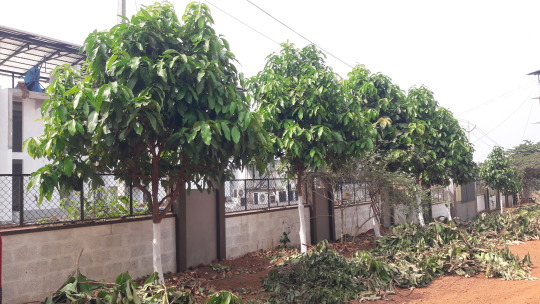
Nellickal Nursery®️, established on December 1, 1999, is located in Ponnani, Malappuram district, Kerala, India. It offers a wide range of services including Fruit Garden Design and Implementation, Fruit Garden Consultancy, Fruit Garden Development, Butterfly Garden Creation, Tree Rejuvenation (Tree Rejuvenation Technology), Pruning, Tree Transplantation (Tree Relocation/Tree Burlapping services/Tree Shifting Technology/Tree Moving method/Trees Translocation), Miyawaki Forest (Crowd Foresting) Restoration, Ecological Restoration, Man-made Foresting, Horticulture Therapy, Aromatic Gardening, Sensory Gardening, Landscaping Gardening, Lawn Grass setting and Lawn Mowing Maintenance Service, Indoor Gardening, Medicinal Gardening, Bonsai Art and Training, Vertical Gardening, Kokedama Gardening, Birth Star Plant Implementation, Zodiac Tree Implementation, Vegetative Plant propagation training, Plant Consultancy, Plant Nursery operations, and Nursery Management. Services are available throughout Kerala (Thiruvananthapuram, Pathanamthitta, Kollam, Alappuzha, Idukki, Kottayam, Ernakulam, Thrissur, Palakkad, Malappuram, Kozhikode, Kannur, Wayanad, Kasaragod) and in other parts of India.
Nellickal Nursery®
Anish Nellickal®: 9946709899
Whatsapp No: 9946881099
www.nellickalnursery.com
#Anish nellickal#nellickal nursery#ponnani#malappuram#kerala#india#9946709899#9946881099#eswaramangalam#plant nursery in india#plant nursery in kerala#plant nursery in malappuram#plant nursery in ernakulam#plant nursery in kozhikode#rasitha nellickal#anush nellickal#anuraj nellickal#veliyancode#tree doctor#tree doctor anish nellickal#Tree Rejuvenation#Butterfly Garden Creation#Tree Transplantation#Crowd Foresting#Horticulture Therapy#Fruit Garden Consultancy#Landscaping Gardening#Sensory Gardening#Aromatic Gardening#Pruning
0 notes
Video
n123_w1150 by Biodiversity Heritage Library Via Flickr: Our new guide to rose culture :. West Grove, Pa. :The Dingee & Conard Co.,1891.. biodiversitylibrary.org/page/43804417
#Bulbs (Plants)#Catalogs#Dingee & Conard Co#Flowers#Nurseries (Horticulture)#Nursery stock#Roses#Seeds#Trade catalogs#U.S. Department of Agriculture#National Agricultural Library#bhl:page=43804417#dc:identifier=http://biodiversitylibrary.org/page/43804417#bhlGardenStories#J. B. Varrone rose#Madame Baron Veillard rose#Augustine Guinoisseau#White La France rose#BHLinbloom#HistSciArt#taxonomy:genus=Rosa#taxonomy:common=rose#rose#rosa#AUGUSTINE GUINDISSEAU rose#MADAME BARON VEILLARD#J.B.VARRONE#flickr#cottagecore#flowercore
2 notes
·
View notes
Photo

Grow light make same size area more seedling possible, following is our model C+ for nursery. #grow light #plant light # led grow light #led plant light #nursery #seedling #horticulture #advance technology https://www.instagram.com/p/CopTljBrpRm/?igshid=NGJjMDIxMWI=
0 notes
Note
My advice for getting a job in botany or horticulture is to start small, something like a nursery or an arboretum or a groundskeeping job, and make lots and lots of friends. Talk to the truck drivers and your coworkers and your bosses and the customers. If you’re in a college or university environment, make friends with the professors. Ask lots of questions, show interest and initiative. The green industry can be a bit cliquey, and the more connections you have, the sooner you hear about job opportunities. And: most laboratory jobs require at least some schooling, but community colleges have excellent programs for all ages. Good luck!
^^ This for sure. the job i had full time until I quit, i got as a student in college and stayed on when i graduated.
my general impressions are that if you want a family or high stability, commercial ag is the way to go; there's higher pay and better benefits, especially if you're in the breeding side putting stuff into spreadsheets or working in a lab etc. if you care less about that and want a stable job that doesn't pay as much but might have just as good benefits, government jobs and regulation work tends to skew in that direction. and if you want to full on follow your dreams you can do academia, but your immediate future will rely more on grants and stuff you have to continuously push for, rather than just clocking in to a 9 to 5; this means that you also are subject to other pressures like needing to produce more papers in things you might be less interested in, etc.
268 notes
·
View notes
Text

10/10/23 ~ Nothing special with school today. Just cleaned out the greenhouse of things that weren’t doing well. The cucumbers had aphids & this type of spinach was lacking nutrients so it wasn’t getting as green as it should. So we just added them to the compost! 🪴👩🏻🌾
#indoor garden#container gardening#sustainable gardening#vegetable gardening#starting seeds#veganuary#grow organic#grow your own food#organic gardening#greenhouse#greenhouse nursery#spinach#fall garden#winter garden#nursery plants#green witch#sustainable agriculture#horticulture
1 note
·
View note
